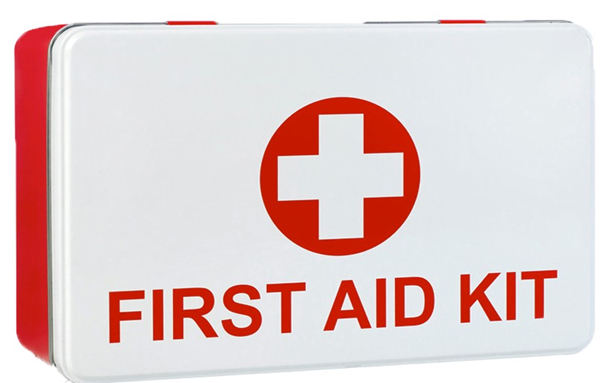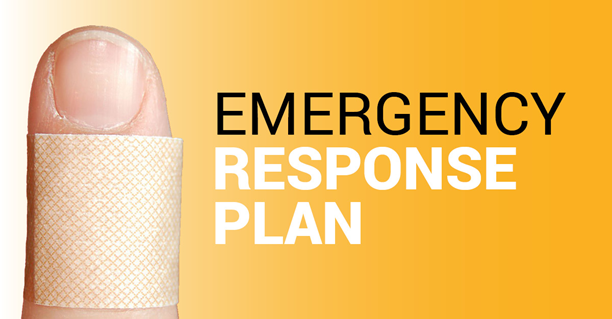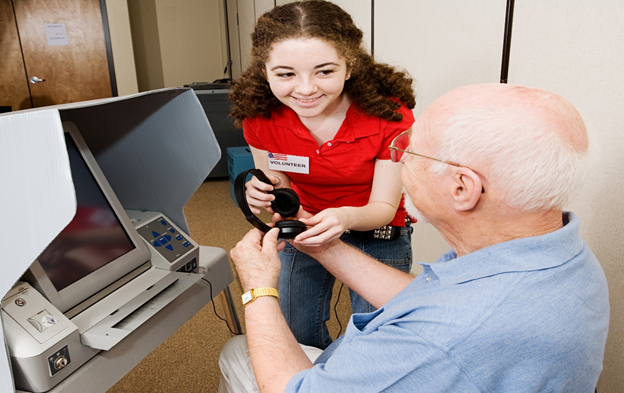Online CPR Certification Blog
Surviving a Disaster If You’re Disabled: Emergency Readiness Tips for Individuals with Special Needs or Disabilities
Date: April 11th, 2020
Emergency Response Readiness for People with Disabilities
Emergency readiness is everybody’s responsibility. You must identify and play your role by responding swiftly to any disasters.
Proactive emergency response is particularly necessary in cases where the victim has some form of disability or special need. Though accidents and disasters distress everybody, individuals with special needs are more affected.

People with special needs suffer the most because their well-being and survival may depend on things such as power sources, lifts, easy-to-get-to transportation, and a fast-and-ready way to communicate—yet a crisis may tamper with some or all of these needs.
But knowing what to do or having a knowledgeable, supportive caretaker, relative, or passerby in the scene of the disaster can increase survival chances.
You can break your emergency readiness plan into a 3-step procedure:
- Understanding the risk profile
- Developing a response strategy
- Acquiring emergency response equipment
Executing these three steps can ensure you prepare well to protect yourself or any needy citizen in the event of an emergency.
What is a Personal Emergency Response Circle?
An emergency or disaster response circle is a team of not less than three people who know each other and can rely on one another in case of a disaster.
How do you create a disaster response circle?
- Discuss with people in the areas where you spend most of your time if they can willingly offer assistance in the event of an accident. Form rapport with neighboring people due to their proximity to your home and trust one with a spare key to your house.
- Have a distant member as part of the circle. They must be far away enough to reduce the chances of ever suffering the same crisis.
- Brainstorm with your response circle to create a master plan that fits your specific risk profile.
- Test your response plan as a team. This is also the time to train on health device use, if any.
The critical role of a personal response circle is to look out for one another. Every member of the circle understands the special needs of the other (if any) and how to respond to emergencies when they occur.
Making a Custom-made Disaster Response Kit for Your Needs
Special people have different needs, which most first aid kit makers do not consider when building kits. A first aid kit is essential because it carries the tools you’ll need to respond to your emergencies.

Although you can still find one of those market-made kits that match your requirements, they might come with a set of challenges.
These challenges usually range from unnecessary items and low-quality accessories to a poor arrangement, which may compromise user-friendliness.
Again, because kits from different manufacturers are built for different emergency treatment needs, it can be difficult finding one that will suit all your needs.
Buying different kinds to come up with what you need can be an expensive idea; and may not give you the result you’re looking for.
That’s why the idea of a DIY kit makes sense; you get something customized to deal with your specific set of risks.
There’s no harm in needing your custom-made kit because the types of risks vary, and each requires different equipment to respond to.
Maybe personal kits can be more effective if kit-building companies provide the “order your custom-made kit” option. A customer can describe their risk profile, and discuss a list of equipment with the provider to come up with a kit tailored to meet their needs.
But because that is not yet practical, a home-made kit is your best option if you need something self-made for your emergency response activities.
For you to make your own first-aid kit home, the first thing to do is to conceive it in your mind. Think of the special needs your kit is expected to solve, the people it’ll help, and the cost of making it.
Those three elements will ensure you come up with a reasonable first aid kit design that will meet all your needs.
Although it may be impossible to premeditate all the dangers of injury that lie ahead, you can evaluate the injuries that have occurred in the past according to their frequency.
This will help you know what you will need to address at most times and will, therefore, influence the medical items you’ll have to buy.
Ensure all injuries or sicknesses that have occurred to members of the circle are written down, including their rate of occurrence.
Documenting everything will help you in identifying which incidences to term as most occurring, and which ones to classify under least occurring.
On top of your first aid kit, swift response to disasters will require a list of other items like
- Water that can keep you on your feet for 3-5days. Store these in portable bottles for smooth evacuation if you need to.
- A paper and an electronic copy of your circle’s emergency response plan and phone numbers etc.
- Food that is not easily perishable. If possible, consider preserved and those that won’t go bad quickly. These should be restocked thrice a year.
- Flashlight (and extra cells)
- Radio (battery-powered with extra cells)
- Your custom-made First aid kit containing all prescription drugs, medic-alert devices, IDs, and every other information about the members of the circle.
- Spare keys to homes and vehicles.
- Money in the form of cash broken down in small notes like $10 and some coins for payphones
- Other personal effects as per every member’s individual needs.
This is only a recommended list of items you may find useful in the event of a disaster. You can always add in things you consider vital to your plan depending on your needs, budget, and the safety plan’s complexity.
Other items you may need include
- Additional sources of fire and light like a lighter, matchbox, candles
- Attire and footwear
- Cosmetic products, sanitizer, kitchen tools
- More water for washing and cooking
- Candles and matches or lighter (place candles in sturdy containers and do not burn unattended)
- Tents and blankets or sleeping bags for everyone
- Garbage bags for personal sanitation
- Minimum of a week’s supply of prescription medications
- Water-antisepticising chemicals.
- Must-have ordinary tools like hand knives, pliers, ropes, gloves, etc.
- Portable fuel stove and fuel that can serve 3-5 days.
- Any other item you see useful for your safety plan.
Lastly, but most importantly, you want to provide every member of the circle with an easy way to communicate in the case of a crisis.Go for a corded phone, walky-talkies, or phones built to help people stay in touch during power outages and emergencies.
Preparing Emergency Supplies for Your Service Pet
Individuals with special needs often rely on service animals for basic guidance and support. Because such people are often attached to their service animals, most want to have their pet/assistant by their side during times of crisis.
Here’s of items to keep for your service pet in case you will need to evacuate.
- 3-5 days of water and pet meals
- Name of pet’s training center and its number
- Handy water & meal plates for your pet
- Can-opener
- Pet toy
- Prescription drugs with a list indicating dose and phone number of your pet’s veterinary doctor.
- Health data including immunizations
- Chain and neckline
- Pet blanket
- Polythene bags
- A pet-safety first aid kit
- An identifier or neck tag with your latest contact info
- Photo of pet for tracking if they get lost
- Permit, or a copy of it
Preparing these items upfront can ensure you have a comfortable stay outdoors with your service pet in cases of emergencies that require you to evacuate.
General Guidelines for Individuals with Special Needs & Bystanders Assisting Them
Here is a list of things persons with disabilities should do in preparation for unexpected accidents that require you to exit your home.
- Arrange and store all emergency supplies organized in a central, accessible, easy-to-grab location.
- Add identifiers to all your special personal supplies, including operating manuals of all gadgets during danger.
- If your condition depends on life-aiding devices or you need constant supervision, request your circle to look for on you soon after a crisis and prepare a secondary source of power up front.
- Attend frequent reminders and update sessions with your emergency response circle to ensure an effective strategy in the event of a crisis.
- Prepare a list of all food and medication allergies (if any), blood group, prescription drugs, physician’s number, health risks, and more to help passersby and your circle assist you in case of an emergency. A copy of this should be sent to your circle.
- If your circle is compromised during a crisis, request others of your disabilities and help them assist you.
- Inform your circle about your service pet, its critical role in your life, and your plans for it as part of the emergency response plan.
- Always carry a portable alarm loud enough to inform bystanders that you are around.
- Recognize that disasters may be overpowering, and stressful situations can aggravate certain existing illnesses.
These personal preparation tips can make it easier for you to survive a crisis and help bystanders assist you during emergencies.
Bystander Tips to Help Disabled Individuals.
As we mentioned earlier, helping our disabled colleagues is everyone’s responsibility, especially in emergencies where their life may depend on your assistance.
So how can a bystander assist a needy person during a crisis?
- Offer to assist the individual and ask how you be of help.
- If a victim with special needs turns down your assistance, then ask them to move to a safe location and wait for emergency responders to reach the scene.
- If their life is at risk, inform others about the situation for further assistance.
- Never touch a person, their service pet, or items without their consent, but for cases where their life is at risk.
- If they agree to be assisted, stick to the guidelines on the life-support devices.
- If administering first aid, Use clinical gloves without latex to minimize the spread of bloodborne pathogens or trigger allergic reactions.
- If they ask you to call someone, heed to their request. They may be asking you to contact family or circle member with better knowledge on how to help them.
- Take charge of the service animal’s role during the emergency as they may not have enough training and ability to deal with disasters.
Different Special Needs and How to Prepare an Effective Emergency Response Plan for Each
Special needs vary from one person to the next. That also means a response plan for one case may not apply for another impairment.

The rest of this guide will discuss; the different types of disabilities, how individuals with those impairments can prepare for a disaster, and ways a bystander can assist in each case.
1. Hearing Disabilities
Persons with hearing disabilities can find it difficult to communicate or understand warnings or instructions during a disaster.
Preparing a readiness plan.
- In the case of an emergency, move your lips and use other gestures to show you have a hearing assistant on.
- Always carry a pen and piece of paper or phone for written one-on-one messages.
- Set up a fire and smoke alarm system that not only makes a sound but uses other visual clues like vibration or lighting.
- Inspect your alarms from time to time.
- Do cell replacements from time to time.
- Always revise and update your emergency response strategy
Other accessories you may need include
- Sticky notes
- A boldly printed notice informing people around you that you have hearing difficulties.
- Portable alarm and torch
- Have hearing devices (if any) with extra power supplies.
- A handy visible notification gadget to tell if there’s a phone call or doorbell ringing.
- Copy of a health document that explains your hearing problems and how you can be assisted.
Bystander tips to assist Individuals with hearing difficulty
- Approach the individual from in front and get their attention using gestures or touching their hands.
- Keep eye-to-eye and be audible
- Speak normally (not too fast, not too sluggish) and maintain close contact.
- Give short instructions
- Employ gesturization to help drive your point home
- Write whatever you want to say if the situation is not life-threatening.
- Do not shout; it may over-amplify in the supportive device and harm the individual.
Lastly, it is also important to recognize that some individuals may have a hearing impairment and be blind at the same time. Always make sure everyone is cared for.
Limited Movement & Persons with Disabilities during Crisis People with most disabilities may not be able to respond to the swift movement needs during an emergency.
Limitations may include things like; not being able to see, dependence on mobility assistance equipment, or illnesses that restrict speed like heart-related or respiratory conditions.
A Readiness plan for Movement.
- For wheelchair users, insist that an emergency exit chair be placed in an accessible location so that your circle can reach it quickly and help you during a crisis.
- Also, have an ever-ready contact with knowledge on how to use your emergency chair, so you have someone to rely on.
- Also, confirm upfront if wheelchairs can access public crisis centers.
Other accessories for your emergency response strategy.
- A small toolbox to patch tire punctures and fix any mechanical problems.
- A portable tire pump
- Extra pair of inner tubes
- Heavy cycling gloves to keep your hands safe.
- Clinical gloves (latex-free) for anybody offering assistance
- Extra battery for automatic wheelchairs.
- A light portable wheelchair as a backup for your auto-chair
Bystander Tips to assist Disabled Individuals with Movement.
- If accessible, wear latex-free clinical gloves before touching a person.
- If possible, move the person along with their wheelchair. If not possible, shelter indoors (if applicable), use moving staircases, or an emergency exit chair.
- Make sure you seek a person’s consent before you touch them unless their life is at risk.
Always look for a fast and easy way to evacuate scenes that could be potentially dangerous without hurting the disabled individual or leaving behind their movement aid.
3. Individuals with Vision Impairment
Anybody with vision impairment, partial or full, may face difficulties seeing warning posters or navigating through unknown locations in the event of a disaster.

These people often need help from others because their survival depends on a peaceful, orderly environment that is compromised during disasters.
Even their service pets may not be able to offer enough assistance in emergencies because their training does not involve such.
Your readiness plan
- Prepare everything you may need in case of an emergency; food, water, personal effects, talking clock or braille watch, vision assistants, a radio with extra cells.
- Also, remember to have an emergency plan for your service pet.
- Have an emergency guiding rod long enough for better navigation in a messed up environment.
- Learn the emergency exit routes and all the floors in your building or workplace for smooth evacuation during a crisis.
Bystander tips to assist the visually impaired
- For a person with both vision and hearing impairment, use your finger to make an “X” on their back as a way to offer assistance.
- Draw letters on their palm with your finger to pass on a message.
- When guiding a person, be half-step in front, allow t and walk at them to hold your hand and maintain their speed.
- Never talk loudly or shout when giving instructions.
- Notify them, in advance, of staircases, turns, obstacles, etc.
- Check out for anything they could run into.
- Do not grab a visually impaired person unless it is a life-threatening emergency.
- In case a service animal is present, discuss with the individual how to include them in the emergency response plan.
Never leave a blind or visually disabled person alone during a crisis. Lack of sight can significantly reduce the chances of survival in life-threatening situations.
4. Hidden or Unseen Special Needs or Disabilities
Some people suffer disabilities or have special needs, not observable or notable, which compromise their ability to move swiftly or respond to emergencies.
Unseen special needs such as difficulty talking, mental health issues may slow or reduce a person’s ability to notice disasters and respond accordingly.
Other health illnesses like allergic reactions, epileptic seizures, diabetes, heart or respiratory conditions, etc. may also fall under hidden special needs.
Preparation tips for individuals with hidden special needs
- Organize all backup medication, foods according to your prescription diet, special medical equipment per your needs, and a thorough list of drugs and dosage.
- Prepare a neck tag with a list of contacts of people from your circle and family members who understand your special needs.
- Ensure the members of your circle know where you keep prescription drugs have your backup medication in the emergency kit.
- Wear a medic alert wearable to show passersby that you have hidden special needs.
Passerby Tips to Help Individuals with hidden special needs
- Ask the individual to define the kind of assistance they need.
- Be flexible in communication as people with special needs may not be able to communicate effectively under stressed conditions.
- Keep eye-to-eye interaction and be reassuring when talking to the individual.
- Be polite, and do not hesitate to say the same thing twice if they ask or fail to hear.
- Help the individual to take ONLY prescription medicine if they need to.
These guidelines can help individuals with special needs get ready for the unexpected and passersby to assist disabled persons during times of crisis. Getting ready for disasters before they happen increases your chances of survival when they occur.
Wrapping Up.
People with disabilities require a response plan because their survival may entirely rely on their readiness to deal with the situation.
An emergency response circle can ensure you have a reliable team of supportive people who can always come to your rescue when you push the panic button.
Lastly, prepare an all-inclusive kit to ensure a comfortable stay for 3 to 5 days, if you have to evacuate, as you wait for things to cool down.